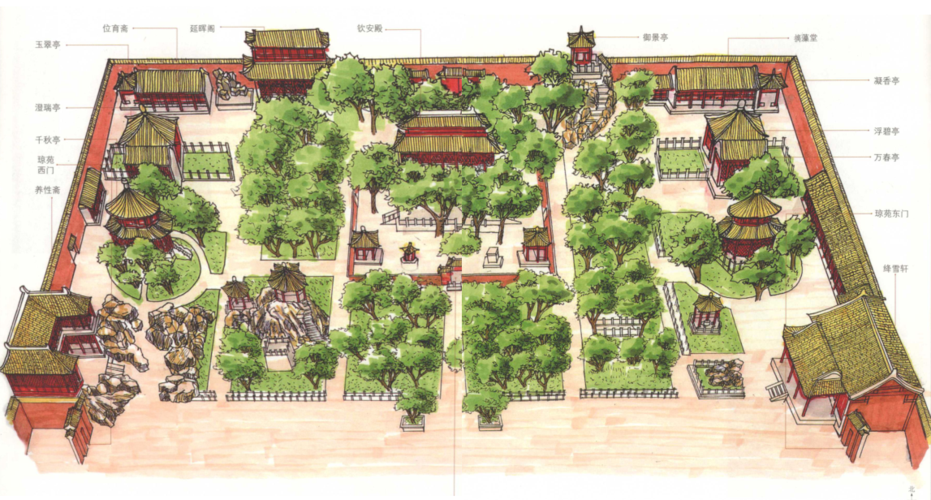
The Symmetrical Layout of the Imperial Garden in the Forbidden City
A Mirror Image of Harmony and Order
The Imperial Garden, nestled within the heart of Beijing's Forbidden City, is a testament to the meticulous planning and profound symbolism that permeates Chinese architecture. Its design, a masterpiece of symmetry, reflects the ancient Chinese principles of harmony, balance, and order, creating a microcosm of the universe as perceived by the emperors who once strolled its paths.
The Central Axis: A Line of Imperial Authority
The garden's symmetry is immediately apparent, with the central north-south axis acting as its backbone. This axis, a common feature in Chinese architecture, extends from the Gate of Divine Might in the north to the Meridian Gate in the south, passing directly through the heart of the garden. This deliberate alignment underscores the emperor's pivotal role as the link between heaven and earth, emphasizing his central position within the cosmic order.
Mirrored Structures: Reflecting Balance and Harmony
Flanking the central axis are meticulously placed structures and landscapes, each mirrored with remarkable precision on the east and west sides. The Hall of Imperial Peace, located at the northern end of the garden, is flanked by two symmetrical structures: the Pavilion of Floating Clouds to the east and the Hall of Elegant Scenery to the west. This mirroring extends to smaller elements as well, with pavilions, bridges, and even trees meticulously placed to create an atmosphere of equilibrium and balance.
Symbolic Significance of the Elements
Beyond the visual harmony, the symmetrical arrangement carries deep symbolic meaning. The east side of the garden, representing the rising sun and yang energy, is characterized by vibrant colors and structures dedicated to activity and festivity. Conversely, the west side embodies yin energy, symbolized by the setting sun and characterized by calmer hues and structures dedicated to contemplation and relaxation.
An Oasis of Tranquility and Imperial Grandeur
The Imperial Garden served not only as a visual delight but also as a place for the imperial family to unwind and enjoy nature's splendor. Its symmetrical layout, while meticulously planned, never feels rigid or artificial. Instead, it creates a sense of tranquility and order, a testament to the harmonious coexistence of humans and nature within the confines of the imperial palace.
FAQ
Q1: What is the significance of the central axis in the Imperial Garden's design?
A1: The central axis, running north to south, symbolizes the emperor's role as the intermediary between heaven and earth, emphasizing his central position in the cosmic order.
Q2: How does the garden's design reflect the principles of yin and yang?
A2: The east side, representing yang, features vibrant colors and structures for activity. The west side, representing yin, uses calmer hues and structures for contemplation.
Q3: What was the primary function of the Imperial Garden for the imperial family?
A3: The garden served as a place of tranquility and leisure, allowing the imperial family to escape the formality of palace life and enjoy the beauty of nature.